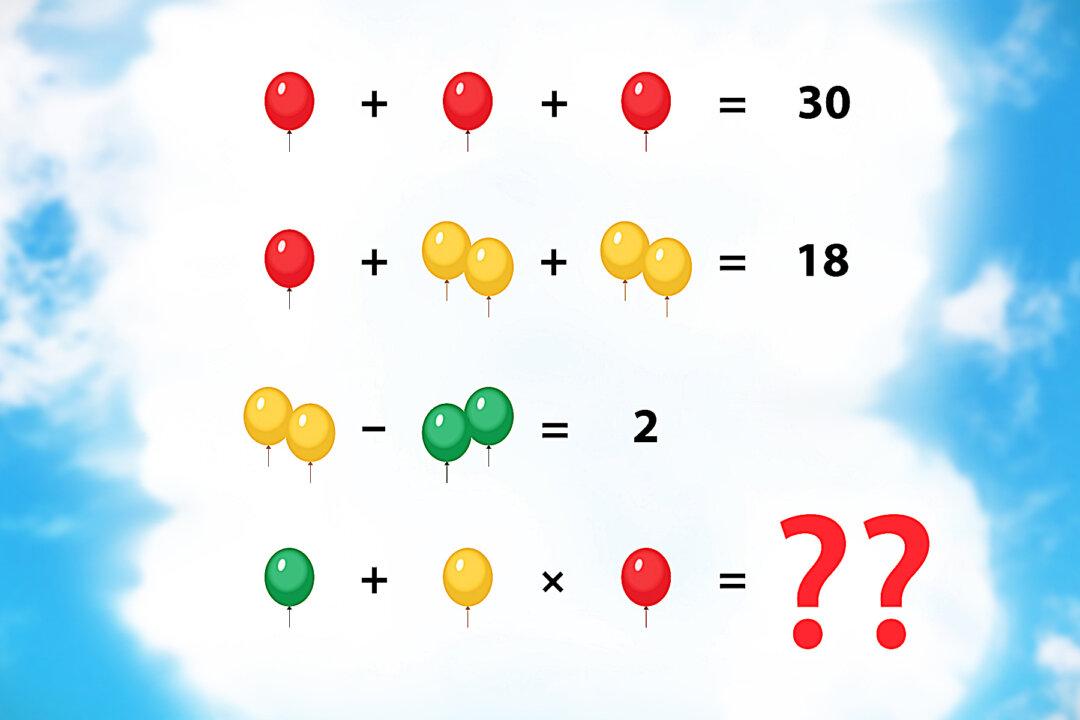There aren’t many of us out there who can resist a good brain challenge—add a few balloons onto the equation, and we’re hooked! This one has gone viral and has been circulating the internet recently, and it’s even gotten some math PhDs interested.
Take a look at the balloon math problem below, and using the given equations, see if you can solve the last question.





